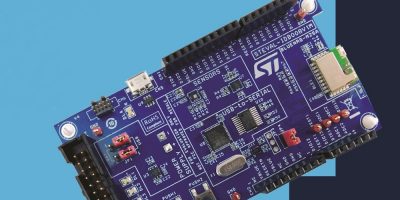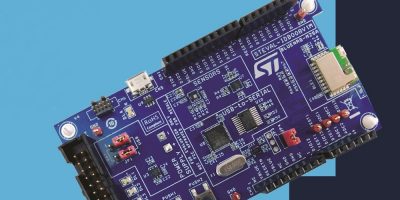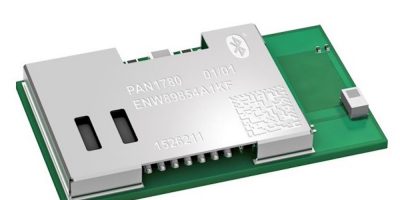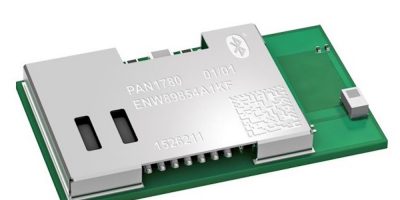The STMicroelectronics STEVAL-IDB008V1M Bluetooth Low Energy 5.0 (BLE) evaluation platform is intended to accelerate application development with modules featuring the BlueNRG-2 SoC.
BlueNRG-2 supports the Bluetooth 5.0 certification, which allows enhanced security with LE secure connections, power-efficient privacy with Link Layer Privacy 1.2 and up to 2.6 times higher throughput with LE data length extension. The SoC contains an Arm Cortex-M0 core operating at up to 32MHz to handle the Bluetooth stack and application processing. Other features are a 32kHz ring oscillator, 24kbyte RAM and 256kbyte flash program memory. Standby power is low, just 0.9 microA in sleep mode with active Bluetooth stack and there is full RAM retention.
The BlueNRG-M2SA module combines a ceramic antenna, RF balun circuit, and 32kHz crystal oscillator and switch mode power supply (SMPS) inductor to reduce power consumption. The compact module measures 13.5 x 11.5mm.
According to STMicroelectonics, the module greatly reduces engineering costs and enables designers to create wireless devices with minimal RF engineering expertise. BlueNRG-M2SA is qualified as a Bluetooth end product, so additional testing by the customer to complete product qualification is unnecessary, says the company. The modules are pre-certified according to US FCC, Canadian IC, European RED, Japan TYPE radio-equipment regulations and will also meet China SRCC requirements when those are finalised.
The STEVAL-IDB008V1M kit’s board combines the BlueNRG-M2 module with sensors including a MEMS pressure and temperature sensor and motion sensors suitable for nine-axis sensor-fusion library. There is also a low-latency, low-power ADPCM codec, ready to use with BlueVoice middleware for voice over BLE streaming. Arduino R3 connectors are provided, and allow access to all the module’s peripherals and enable users to further extend functionality by adding expansion shields.
The associated development-software package, STSW-BLUENRG1-DK, contains an intuitive BlueNRG-Navigator graphical user interface (GUI) which negates the need for an external programmer or hardware.
The kit also simplifies integration of the BlueNRG-M2SA module with ST’s STSW-BNRG-MESH software. STSW-BNRG-MESH implements the Bluetooth SIG Mesh Profile v1.0 to allow true two-way communication and range-extending mesh networks, for industrial and smart building applications.
Operating temperature range is -40 to +85 degrees C. The module has 5dBm RF output power, enabling it to be powered directly with a pair of AAA batteries or any power source from 1.7 to 3.6V.
The STEVAL-IDB008V1M evaluation kit is available now.







